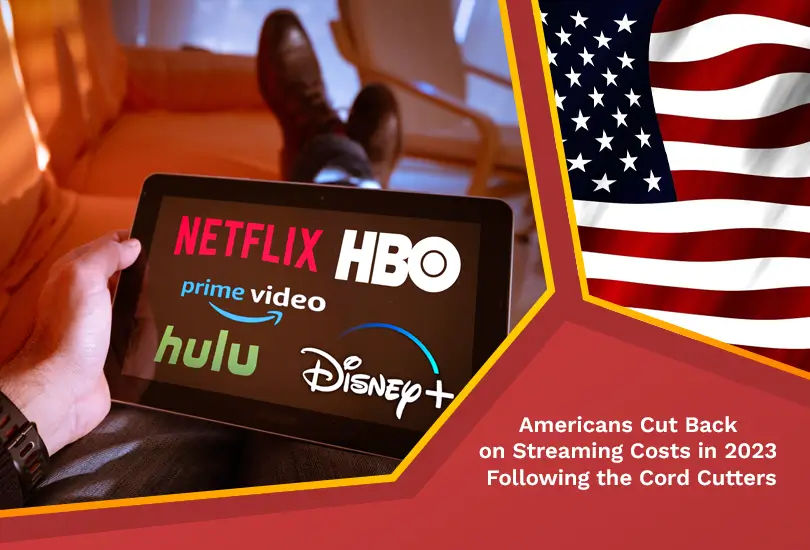Betty is an enthusiastic Computer Science Graduate and an extrovert who loves to watch Netflix, and is a binge-watcher always seeking quality shows to add to her watch history! She loves to write about the show, she has watched, to make her readers acknowledge them, and witness a cherished time with friends, and family!
As the cord-cutting trend sweeps the nation, Americans are cutting down streaming expenses in 2023. With numerous options, they're opting for budget-friendly ad-supported services, revamping the digital entertainment landscape.

The ever-expanding landscape of streaming services has grown remarkably diverse, with over 350 such platforms tracked in North America alone. Elizabeth Parks, President of Parks Associates, emphasized the daunting task of keeping pace with the vast array of services and business models during a recent webinar. However, despite this diversity, recent trends indicate that American viewers are keen on reducing their streaming costs, leading to a shift towards ad-supported streaming services.
Parks Associates’ “State of the Market: Streaming Video Services” report highlights a significant 13% increase since 2018, with 31% of U.S. households opting for ad-supported video-on-demand or free streaming services. Notably, the report forecasts that approximately 41 million U.S. households will opt for ad-based over-the-top (OTT) video services like Tubi TV, Freevee, and Pluto TV. Parks emphasized that the industry is undergoing a transformative phase, marked by evolving business models aimed at bolstering profitability.
However, the pursuit of profitability remains an ongoing challenge. Despite the surge in streaming subscribers during the pandemic, the current trend reflects a decline in monthly spending on streaming subscriptions from $90 in 2021 to $73 in 2023. Simultaneously, inflationary pressures have put streaming services in a tight spot, compelling them to explore options to retain budget-conscious customers while balancing the need to raise subscription fees for sustainability.
The phenomenon of churn, or the rate of cancellations, has been steadily increasing, with an annualized rate of 47%, driven primarily by households seeking to curtail expenses. Notably, the return rate to terminated services within a year of cancellation stands at a striking 90%, indicating that discounts and fresh content serve as significant incentives for resubscription.
Moreover, the proliferation of choices poses another challenge for viewers, with the time spent on content discovery significantly influencing churn rates. Eric Sorensen, Streaming Video Editor at Parks Associates, emphasized the necessity for services to simplify the discovery process to retain viewer interest. According to Sorensen, lengthy searches for content lead to viewer frustration and subsequently contribute to higher churn rates, as valuable viewing time is spent on browsing rather than consumption.
In light of these challenges, consolidation has emerged as a pivotal strategy in the streaming industry. Paramount, for instance, has chosen to license content beyond its own channels, with recent partnerships indicating a shift toward collaboration. Notable instances include the revival of the Star Trek: Prodigy series on Netflix and the airing of the upcoming Frasier reboot on CBS after its original premiere on Paramount+. This trend towards consolidation is not limited to Paramount, as industry experts such as TiVo suggest a blend of subscription video-on-demand services and ad-supported video-on-demand as a practical solution.
TiVo’s Video Trends report advocates for a hybrid structure that enables users to consolidate their subscriptions, thereby reducing costs without compromising content access. This approach not only benefits consumers but also serves the interests of streaming companies and advertisers, ensuring a sustainable and profitable future for the streaming industry.
Read More:




